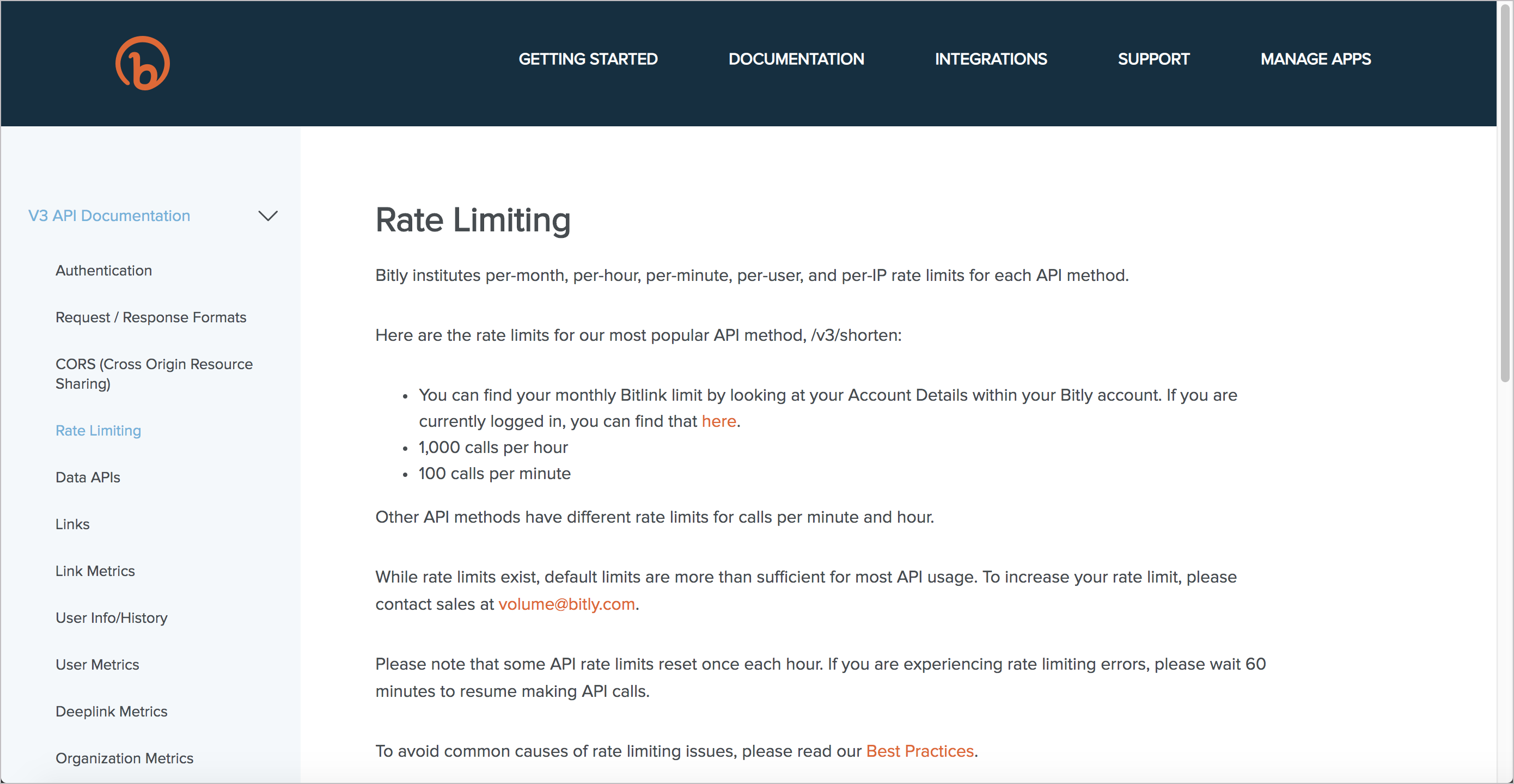The Developer’s Guide To API Rate Limiting And Throttling

Executive Summary

Learn why and how to implement API rate limiting and throttling to protect your APIs and enhance their performance. Explore various methods for effective implementation, including token buckets, leaky buckets, windowed counters, and dynamic throttling strategies. Understand how these techniques can prevent system overload, improve user experience, and ensure the security and reliability of your API services.

Introduction:
APIs are essential components of modern software architectures, facilitating seamless communication between different systems, devices, and applications. However, managing high volumes of API requests can be challenging, leading to potential issues such as performance degradation, denial-of-service attacks, and resource exhaustion. This is where API rate limiting and throttling come into play as effective strategies to control the flow of requests and optimize API performance.
1. Techniques for Implementing Rate Limiting and Throttling
Token Bucket Algorithm:
-
Description: The token bucket algorithm allocates a fixed number of tokens to a bucket at a constant rate. Each request consumes one token, and if the bucket is empty, the request is denied.
-
Important Aspects:
- Bucket size: Determines the maximum number of requests allowed within a specific time window.
- Token allocation rate: Controls the pace at which tokens are added to the bucket.
- Request rejection handling: Defines the behavior when the bucket is empty, such as queuing or rejecting the request outright.
Leaky Bucket Algorithm:
-
Description: Similar to the token bucket, the leaky bucket also has a finite capacity. However, it continuously drains tokens at a constant rate, regardless of request arrival. Requests are allowed if there are sufficient tokens available, otherwise they are dropped.
-
Important Aspects:
- Bucket size: Specifies the maximum number of permitted requests within a time interval.
- Drainage rate: Governs the rate at which tokens are depleted from the bucket.
- Overflow handling: Determines how to deal with excess requests when the bucket is full, such as discarding or queuing them.
Windowed Counters:
-
Description: The windowed counters technique divides the time into fixed intervals called windows. Requests are counted within each window, and if a predefined threshold is exceeded, subsequent requests are throttled.
-
Important Aspects:
- Window size: Defines the duration of each time window.
- Threshold value: Sets the limit on the number of requests allowed within a window.
- Sliding windows: Enables the evaluation of requests over a moving time window, allowing for dynamic adaptation to变化ing traffic patterns.
Dynamic Throttling:
-
Description: Unlike fixed-rate limiting methods, dynamic throttling adjusts the request limits based on real-time conditions. It monitors various metrics, such as system load and response time, and dynamically adjusts the throttling parameters to maintain optimal performance.
-
Important Aspects:
- Monitoring mechanisms: Tracks key metrics to assess the health of the API and detect performance issues.
- Adjustment algorithms: Implements algorithms to determine appropriate adjustments based on the collected metrics.
- Adaptive behavior: Continuously fine-tunes the throttling policies to ensure a balance between user experience and system stability.
2. Benefits of Implementing Rate Limiting and Throttling
-
Prevents System Overload: Limits the number of requests to a manageable level, preventing the API from being overwhelmed by excessive traffic.
-
Improves User Experience: Ensures that legitimate users have timely access to the API by preventing malicious actors from flooding the system with excessive requests.
-
Enhances API Security: Thwarting denial-of-service attacks by limiting the rate of requests from malicious sources.
-
Optimizes Resource Utilization: Ensures efficient use of server resources by preventing unnecessary processing of excessive requests.
-
Maintains System Reliability: Proactively prevents system failures caused by resource exhaustion or performance degradation.
3. Conclusion
API rate limiting and throttling are indispensable techniques for managing the flow of requests to APIs, ensuring optimal performance, security, and reliability. By implementing appropriate strategies, such as token buckets, leaky buckets, windowed counters, and dynamic throttling, developers can effectively control request rates, mitigate potential issues, and guarantee a positive user experience. These techniques not only prevent system overload but also safeguard APIs against malicious activity, optimize resource allocation, and enhance the overall stability and responsiveness of your API services. By embracing API rate limiting and throttling, you can empower your APIs to handle high volumes of requests while maintaining exceptional performance and security.
Keywords:
- API
- Rate Limiting
- Throttling
- Token Bucket
- Leaky Bucket
FAQs
Q1. What is the primary goal of API rate limiting?
A1. To control the flow of API requests, prevent system overload, and safeguard against potential denial-of-service attacks.
Q2. How does dynamic throttling differ from fixed-rate limiting?
A2. Dynamic throttling adjusts request limits based on real-time conditions, such as system load and response time, while fixed-rate limiting enforces a predetermined request limit.
Q3. What is the advantage of using windowed counters?
A3. Windowed counters provide the flexibility to evaluate requests over specific time intervals, allowing for the detection of unusual traffic patterns or bursts of requests.
Q4. How can I handle overflow requests when using a leaky bucket algorithm?
A4. Common strategies include dropping excess requests, queuing them for later processing, or implementing a backpressure mechanism to slow down the incoming request rate.
Q5. Is it essential to implement both rate limiting and throttling?
A5. While both techniques serve similar purposes, they offer distinct advantages. Rate limiting focuses on controlling the overall request volume, while throttling prioritizes maintaining optimal performance based on real-time metrics. Implementing both strategies provides a comprehensive approach to managing API requests effectively.

Rate Limiting is a very important concept that every API developer should be aware of. If you do not implement rate limiting, your API could be vulnerable to abuse. There are a number of different rate limiting algorithms that you can use, and the best one for your API will depend on your specific needs.
Throttling is a technique that can be used to limit the number of requests that a client can make to your API. This can be useful for preventing abuse, and it can also help to improve the performance of your API.
I disagree with the article’s claim that rate limiting is always necessary. In some cases, it may be more appropriate to use a different approach, such as authentication or authorization.
I find it ironic that the article talks about the importance of rate limiting, but it does not provide any code examples. This makes it difficult for developers to implement rate limiting in their own APIs.
I’m not sure why the article is so focused on rate limiting. Throttling is a much more effective way to prevent abuse, and it is also easier to implement.
The article provides a good overview of rate limiting and throttling, but it could be improved by including more technical details. For example, the article could provide a list of different rate limiting algorithms, and it could explain how to implement each algorithm in code.
I’m not sure why the article is so focused on rate limiting. Throttling is a much more effective way to prevent abuse, and it is also easier to implement.
I disagree with the article’s claim that rate limiting is always necessary. In some cases, it may be more appropriate to use a different approach, such as authentication or authorization.
I find it ironic that the article talks about the importance of rate limiting, but it does not provide any code examples. This makes it difficult for developers to implement rate limiting in their own APIs.
I’m not sure why the article is so focused on rate limiting. Throttling is a much more effective way to prevent abuse, and it is also easier to implement.
The article provides a good overview of rate limiting and throttling, but it could be improved by including more technical details. For example, the article could provide a list of different rate limiting algorithms, and it could explain how to implement each algorithm in code.
I’m not sure why the article is so focused on rate limiting. Throttling is a much more effective way to prevent abuse, and it is also easier to implement.
I disagree with the article’s claim that rate limiting is always necessary. In some cases, it may be more appropriate to use a different approach, such as authentication or authorization.
I find it ironic that the article talks about the importance of rate limiting, but it does not provide any code examples. This makes it difficult for developers to implement rate limiting in their own APIs.